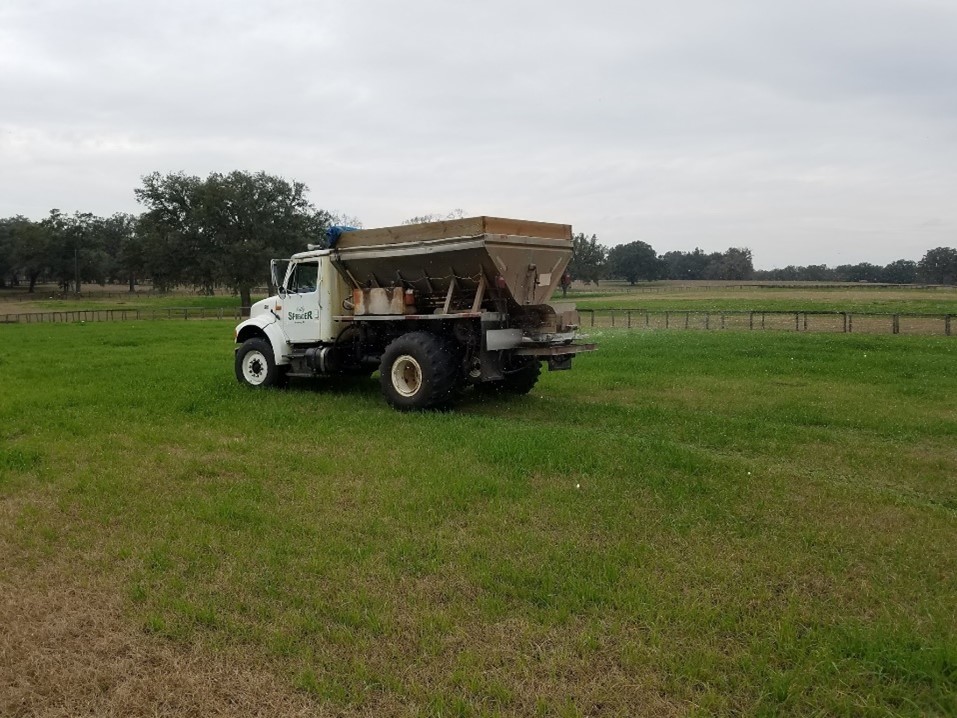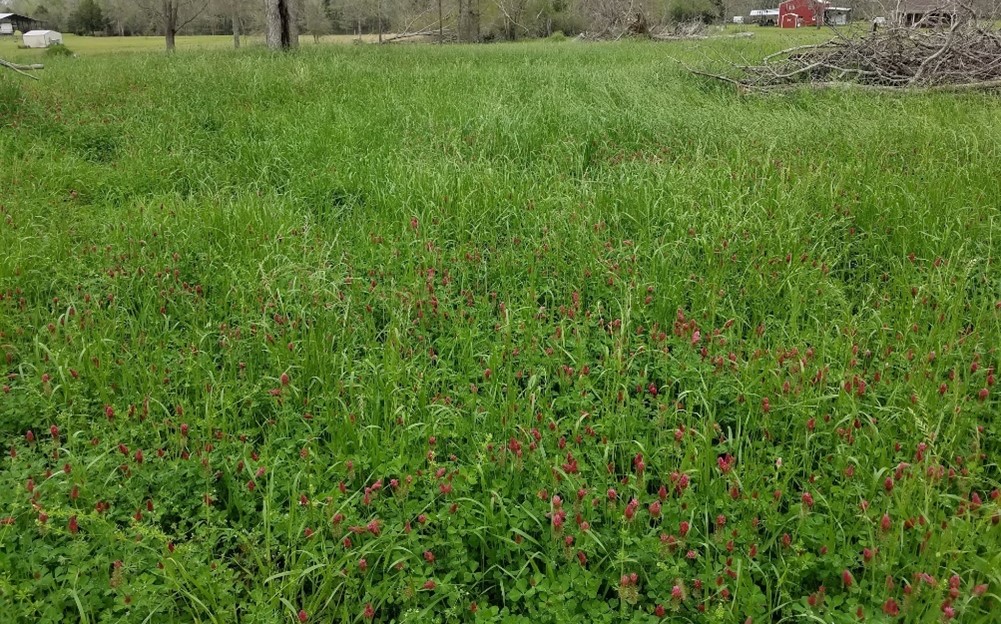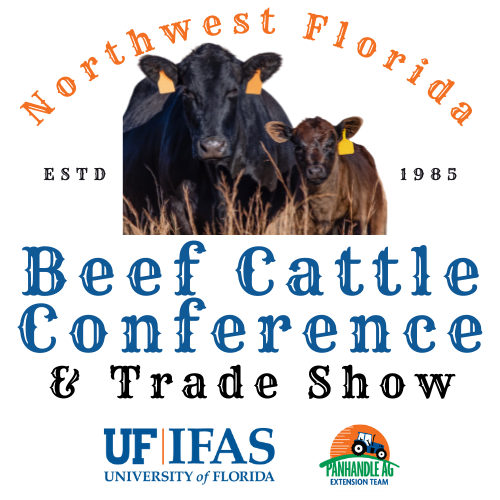Dr. Marcelo Wallau, UF/IFAS Extension Forage Specialist, Mark Mauldin, UF/IFAS Extension Agent Washington County
The recurrent theme of recent conversations with extension colleagues and producers is the great concern over the cost of production in 2022. Prices of fertilizers, fuel, herbicides, and commodities have increased substantially in the recent past and cattle prices have failed to keep pace. The dramatic increase in the cost of some inputs will likely make their use appear cost-prohibitive. However, passing on necessary inputs can lead to reduced performance and long-term degradation of pastures. Resiliency and the capacity to adapt are paramount when working with natural systems. In times of hardship we need to be better farmers and find more creative solutions. The following are some points to consider while you are developing pasture and livestock management strategies to help overcome the recent increases in production costs.

Delayed fertilization on cool-season pastures: delayed production and reduced overall productivity. Although the cost of fertilizer is currently high, lack of fertilization can cost more in the end. Credit: Marcelo Wallau, UF/IFAS
–
Improve Nutritional and Reproductive Management – Different animal categories have varying nutritional requirements. If all categories are in the same herd at the same time there is no way to differentiate how their nutritional needs are met. This is a very inefficient situation. Look for opportunities to target-feed the most demanding categories (e.g. lactating and growing cattle) while reducing supplemental feed allocated to cull and/or dry cattle. The inability to effectively allocate feed and forage resources is one of the major negatives associated with a year-round breeding season. Shortening the breeding (and calving) seasons can greatly improve your capacity to manage herd nutrition more judiciously, without sacrificing productivity. For more information see Increasing Revenues with Reproductive Management.
Cull Hard – Reducing inventory now can be a good strategy to reduce the forage and feed demand and increase cash flow. Cull cattle prices tend to peak between March and May. Consider taking advantage of that opportunity to market your least productive animals. Having a defined breeding/calving season allows for easy identification of less productive animals. You may even consider culling late-calving cows (which are more likely to not breed back before the end of the breeding season) in addition to open cows. For more information see Maximizing Cull Cow Revenues.
Only Keep the Best Replacements – Not retaining any replacement heifers could be a way to manage cost, but may have negative long-term consequences on herd genetic improvement and average herd age. A wiser approach would be to only keep the very best heifers that have the highest likelihood of reproductive success. Utilizing resources like the know your heifer program from Dr. Mario Binelli can help identify animals of higher genetic merit and reproductive potential, allowing for a reduction in the number of replacements carried through the breeding season.
Adjust Stocking Rates – Appropriate stocking rates help to ensure adequate forage allowance and optimize pasture growth. Overgrazed pastures produce less, and peak of growth is delayed. In some cases grazing harder can actually lead to more need for feeding. The key concept here is forage budgeting and ensuring the balance between forage production and demand. Reviewing carrying capacity and reanalyzing the forage budget can show when/if you are likely to have a forage shortage and to what extent. For more information see Managing stocking rate.
Invest Where the Return is Greater – Even though fertilizer costs are double or even triple compared to this same time last year, for those who established cool-season pastures this year the investment is still necessary. The price of commodities is also high, and the availability of by-products is limited, making feeding a less than attractive alternative to grazing. Since the initial cost of planting has already been absorbed, it makes sense to fertilize and get all viable production out of established forages. If fertilization becomes cost-prohibitive, consider reducing the area being fertilized, but still apply the recommended rate. Integrating legumes into the forage system has been frequently cited as a way to reduce the need for nitrogen fertilization. This practice and has been highly promoted by our research and extension team as a way to reduce the cost of production and improving animal performance. While these claims are valid, responses are generally not immediate. Legume integration is part of a long-term “system-based approach”, not a quick fix. For more information watch Integrating Forage Legumes into Pastures to Reduce Fertilization Expense.

Mixture of cool-season grasses and legumes without nitrogen fertilization: legumes add nitrogen to the system but the response is delayed and productivity of grass will be lower. Credit: Marcelo Wallau, UF/IFAS
–
Know Your Hay Quality – A dry fall has delayed cool-season forage planting, and the dry winter so far, in most regions of Florida, has limited forage productivity, forcing most people to extend the hay feeding season. Some have not even planted a winter pasture because of the scary price of fertilizers, and are planning on feeding hay through the winter. The issue here is that commodity prices are also high, and supplementation will likely be quite expensive. Knowing the quality of the hay is essential to determining an efficient supplementation strategy. The only way to know the quality of your hay is to have a laboratory analysis performed. With the analysis in hand, tools like the UF Hay Balancer can help determine what and how much feedstuff is needed for supplementation. These calculations will illustrate why it generally pays off to produce high-quality hay – it significantly reduces the need for supplementation! Get a hay test, it will save you money! (and ask your extension agent about the SE Hay Contest.).
Watch Your Weeds – While this might not be the year to declare an all-out war on weeds (herbicide prices and availability are shaky at best), it is still very important to be cognizant of developing weed pressure in your pastures. Weed management goes hand in hand with the concepts of forage budgeting (to avoid overgrazing) and fertilization (to keep a healthy pasture). The weeds are frequently not the problem per se, but a symptom of mismanagement. Discontinuing weed management altogether is probably not wise, weed problems tend to get worse over time when left untreated. There are still some economically viable herbicide options available. Mowing will seldom be a cheaper strategy, especially with high fuel costs.
Think ahead and plan, so you know what to expect and how you will deal with it. Sharpen the pencil and analyze available options. There has never been a better time to really know your cost of production. Contact your local extension agent and discuss available options.
If you are interested in discussing more about alternatives to manage costs in livestock production without sacrificing productivity, join us at the Northwest Florida Beef Cattle Conference & Trade Show – February 9, 2022 – Marianna, Florida. The Northwest Florida Beef Conference and Trade Show is an educational program provided by the UF/IFAS Panhandle Agriculture Extension Team. For more information on the Beef Conference contact Doug Mayo, at 850-482-9620, or demayo@ufl.edu.
- 2025 Southeastern Hay Contest Sets New Records - October 24, 2025
- 2025 Cool-Season Forage Official UF/IFAS Variety Trial Results - September 5, 2025
- Revisiting Crop–Livestock Integration in the Southeastern United States - September 5, 2025

